This is a reposted article originally written for Positive Feedback by our friend Rush Paul. The great team at Positive Feedback, as well as Rush himself, have kindly given us permission to repost this and you can find the original article at this link.
Thanks to Rush the PF team!
As David Robinson and I were discussing a couple of weeks ago, we truly are living in the golden age of recorded music and home audio—both in the equipment available to us and, most importantly, in the wealth of wonderful performing artists and recordings. You may note that many of the recordings I recommend are not the artists in the flashing lights of over-hyped marketing budgets. And yet, these artists, who record for labels without the immensely rich marketing budgets, are supremely talented and immensely engaging. I feel so honored to listen to their recordings and to share with you some of the bounty that is available in the acoustic music world in which I spend most of my time. Below are some of these supremely talented artist making richly rewarding recordings.
-
 Adrift€17,99 – €34,49
Adrift€17,99 – €34,49
Adrift, Delphine Trio. TRPTK 2024 (32bit DXD, DSD256)
The Delphine Trio brings together three passionate young musicians from opposite ends of the globe: Australian clarinetist Magdalenna Krstevska, Dutch cellist Jobine Siekman and South African pianist Roelof Temmingh. Founded in 2020 at the Royal College of Music, London, the Delphine Trio regularly perform across the UK and the Netherlands. This is their debut album, and it is a stunner.
TRPTK recording and mastering engineer, Brendon Heinst, writes in his blog post, “I still remember the day we received an email from the Delphine Trio, asking us if we’d be interested in recording an album with Kenneth Leighton’s Fantasy on an American Hymn Tune on it. Of course we were—it’s an incredible piece, and the trio itself (comprised of clarinet, cello and piano) is remarkable as well. Other pieces still needed to follow, which was TBD, but a little while later we finally set out to MCO Studio 1 to make the recording.” (See HERE for his article and description of the recording process used.)
Kenneth Leighton (1929-1988) was a British composer and pianist. His compositions include church and choral music, pieces for piano, organ, cello, oboe, and other instruments, chamber music, concertos, symphonies, and an opera. I’ve always found his music intriguing and enjoyable. And Brendon is absolutely correct about his composition Fantasy on an American Hymn Tune, which opens the album. Delphine Trio open the work with an beautifully sung acapella rendition of the Robert Lowry’s American Spiritual Shall We Gather by the River, the tune for which is woven throughout Leighton’s piece. And then for the following 19 minutes they pursue an intriguing journey with Leighton as his music searches, through often jazzy segments, the nature and meaning of this world around us. It is an emotionally charged exploration.
The Delphine Trio continues with twentieth century compositions by Robert Kahn (1865-1951)), John Psathas (b.1966), Astor Piazzolla (1921-1992), Robert Delanoff (b.1942), and Mátyás Seiber (1905-1960).
Piazzolla’s Oblivion is a classic and likely the most well-known work in the program. Here, the Delphine Trio make their own interpretation of the work in an arrangement by Roelof, the pianist, based on Piazzolla’s original recording from 1984. As I listened to the familiar notes of this piece, it was a pleasure hearing a different take on the work in Roelof’s arrangement for these instruments. Nicely done.
It is such a pleasure hearing an entire recital of twentieth century compositions that, while often less well known, are dramatically good works. The works are varied, frequently dramatic, and contain unexpected twists and turns that consistently piqued my interest for more. I applaud their programming choices! The less frequently heard combination of clarinet, cello and piano makes for a welcome bit of aural recreation.
Importantly, the performance qualities of the Delphine Trio are very high—they are excellent musicians who perform with both a high degree of technical proficiency and a clearly evident pleasure in creating music. There is a joyful elan to their performances that is to be cherished. This is music-making of the highest caliber. I look forward to more recordings from this excellent trio.
This is another excellent recording by Brendon Heinst, who continues to excel in his very natural sounding capture of the performers and their instruments together with the air and reverberation of the natural acoustic space in which they are performing. Just gorgeous.
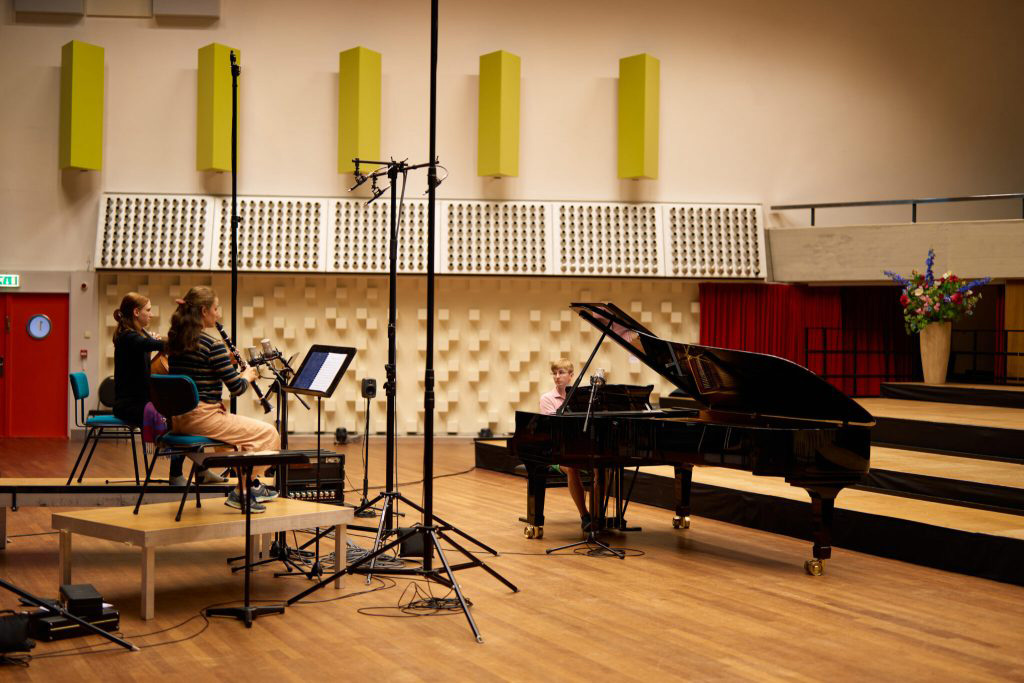
-
 Amsterdam 1850€20,99 – €34,49
Amsterdam 1850€20,99 – €34,49
Amsterdam 1850, Geisler Ensemble with Florencia Gómez. Navis Classics, 2024 (32bit DXD, DSD256)
The Geisler Ensemble is an international ensemble of wind players that has its main focus in the historically informed performance of music from the 18th and 19th Centuries. Each musician plays on original instruments or copies of original instruments, and the ensemble strives to find a fresh sound in old repertoire and in discovering new works to share with its audiences. And their performances on this album could entice me to listen to more performances by wind ensembles if others can be found who are as engaging as this group.
Perhaps I am so attracted here because of the sound of the original instruments. Always distinctive as compared to modern instruments, there is a very enticing piquancy and texture to the sound of these instruments that brings out so much more in the music conceived with the sound of these original instruments in mind. With modern wind instruments, there is so often much of a blended uniformity of sound that ultimately, to my ear, begins to sound bland, sometime even banal. Not here. Here, the sound resonates with a woodiness, resonance and texture that is simply missing from modern instrument wind ensembles. (Sorry, modern instrument performers. This is just how my ear reacts.)
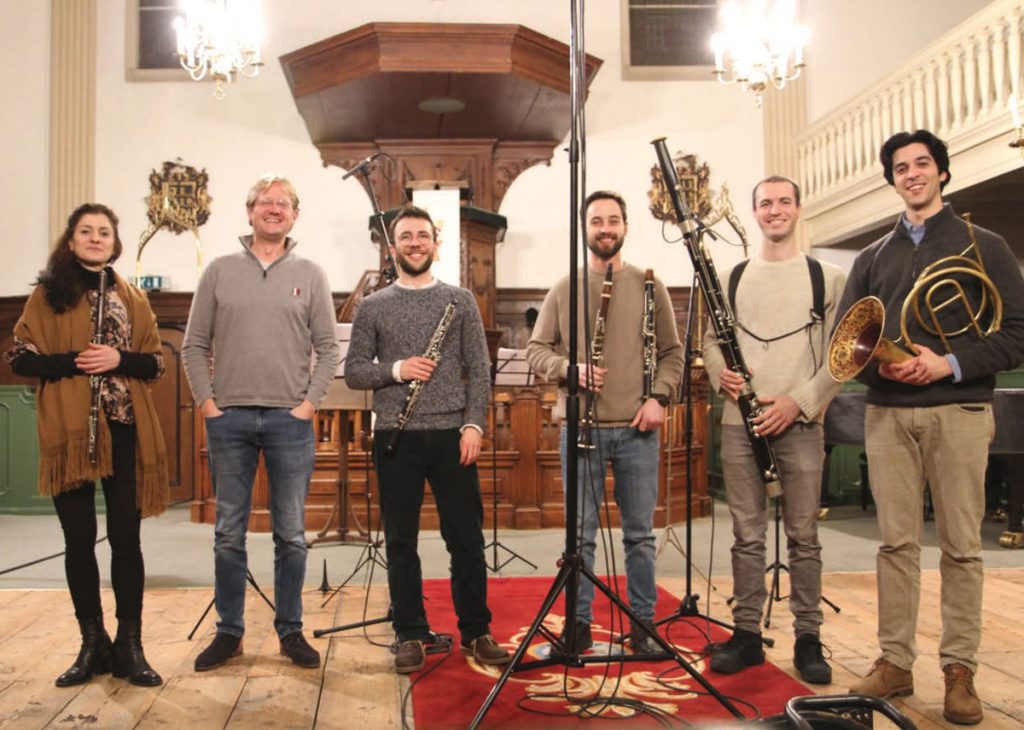
Surprisingly to this baroque music lover, this music is solidly of the 19th Century and I find it immeasurably interesting and delightfully different. No doubt contributing to this feast of timbre are the original Christian Gottfried Geisler manufactured flutes (ca. 1850) included in the ensemble.
Unlike historic stringed instruments, early wind instruments have tended not to survive into the present. And modern instruments have evolved with very different capabilities and sound unless intentionally built as copies of historic instruments. That flutist Florencia Gomez came to possess two original Geisler flutes is most unusual. As she says in the liner notes, “Other instruments made by Geisler are currently kept in museums like the Rijksmuseum in Amsterdam, the Kunstmuseum in The Hague and the Edinburgh University Collection of Historic Musical Instruments.” For Gomez, one was a gift from the daughter of a long time owner of the flute, the other was a chance find in a curiosa musical instruments shop in Amsterdam.
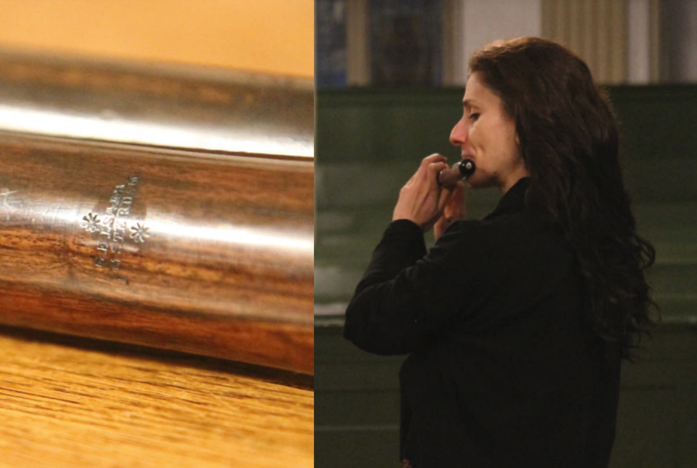
Geisler wood flute detail. Florencia Gomez.
Both wooden flutes are 9-keyed instruments. Gomez says, “They play fantastically together and still have their own organic and vivid sound even after these many years.” And this is decidedly demonstrated in the Duo Concertante of Benoît Tranquille Berbiguier (1782-1835) performed on tracks 5 and 6.
The album closes with a special treat, the delightful Rêverie for flute and piano by Mathieu-André Reichert (1830-1880). Why “delightful” you ask? Because the piano part is performed by played by Liene Madern-Stradina on a wonderful Dutch square piano fortepiano made in Amsterdam in ca. 1830-1835. The combination of timbre from the flute and fortepiano is simply a pleasure to hear, a true aural treat with which to finish this fine recital.
And, I must make a shout out for natural horn player Federico Cuevas Ruiz. His playing on a very difficult instrument is a notable contribution to the success of this album. Not to short-change the other terrific members of this ensemble, who all play beautifully, I would be remiss not to particularly mention Ruiz because each time he was called on, his contribution was nigh on perfect and made such a huge difference for the overall success of these performance.
The sound of the Geisler Ensemble is beautifully captured by Navis Classics founder and recording engineer Daan van Aalst who captures both the instruments but also the marvelous acoustics, air and natural reverberation of the Lutherse Kerk Haarlem. His attention to microphone placement and not messing up the very subtle harmonic overtones captured at those mikes allows for the reproduction in the released album of the remarkably unique and diverse timbre of the instruments played by this ensemble. So many recording engineers lose that fine fragile and delicate level of resolution. Daan has preserved it beautifully.
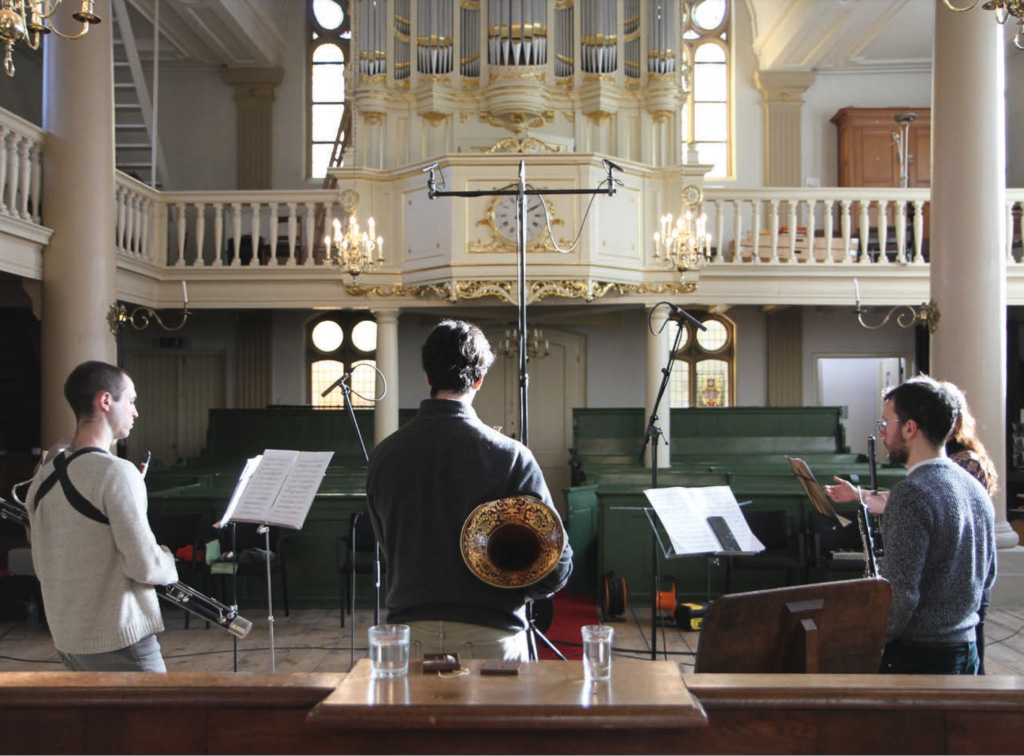
-
 Beethoven Symphony No. 3 ‘Eroica’ & Coriolan Overture€20,99 – €34,49
Beethoven Symphony No. 3 ‘Eroica’ & Coriolan Overture€20,99 – €34,49
Beethoven Symphony No. 3 ‘Eroica’ & Coriolan Overture, Budapest Festival Orchestra, Ivan Fischer. Channel Classics 2024 (32-bit DXD, DSD256).
I was so pleased to find out that Ivan Fischer was moving forward to record Beethoven’s Eroica, continuing his cycle of Beethoven’s Symphonies. I am a huge fan of Fischer’s recordings with his Budapest Festival Orchestra. And all of his recordings are made so much the more enjoyable due to his long-standing relationship with Jared Sacks and Channel Classics. And the resulting recording is well worth the wait. It is immensely engaging and well crafted.
Ivan Fischer brings his usual intelligence and musical sensitivity to this performance, and the BFO is spot on in their ensemble and technical excellence. The propulsive energy of the opening movement is perfectly judged—excellent tempo shifts, high energy, but never rushed or out-of-breath. Throughout the performance, all is maintained in carefully judged balance. Lots of nuance, time to linger where warranted, tension and high energy as appropriate, lines and phrases never stretched out of shape. The entire performance is simply an utter delight.
And the sound quality! Ah, gorgeous. Full dynamics, broad deep soundstage, immense detail. The inner detail and the micro-dynamics are particularly well captured—this is where that sense of life comes from. Jared has outdone himself with this recording. I’m just rolling with joy as I listen to this recording—both with the performance and with the sound quality.
How many Beethoven Eroica recordings do I have? Oh, way too many, I’m sure. (Answer: I checked, I’m well past 30.) Each is different. But Ivan Fischer’s performance here rises right to the top of my list, and Jared’s recording trounces all the others.
Oh, how about the Coriolan Overture, you ask? My basic answer is, yes, okay, it’s on the album. It’s good. Thrilling even. It’s as good as performances of this work get. But do I really care about the Coriolan? Will I make an album decision based on whether it’s there or not, good or not? I don’t think so. But, it’s nice. Don’t get me wrong. It’s a very nice performance. But, you need this album for the Eroica.
And clearly, I don’t care how may copies of Beethoven’s Eroica you may have, you need this one! Its superb.
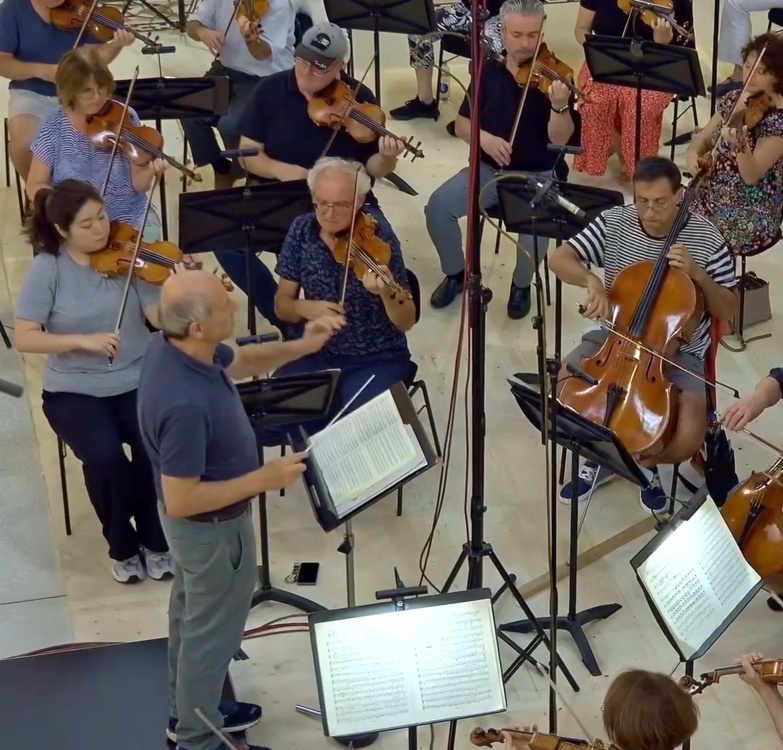
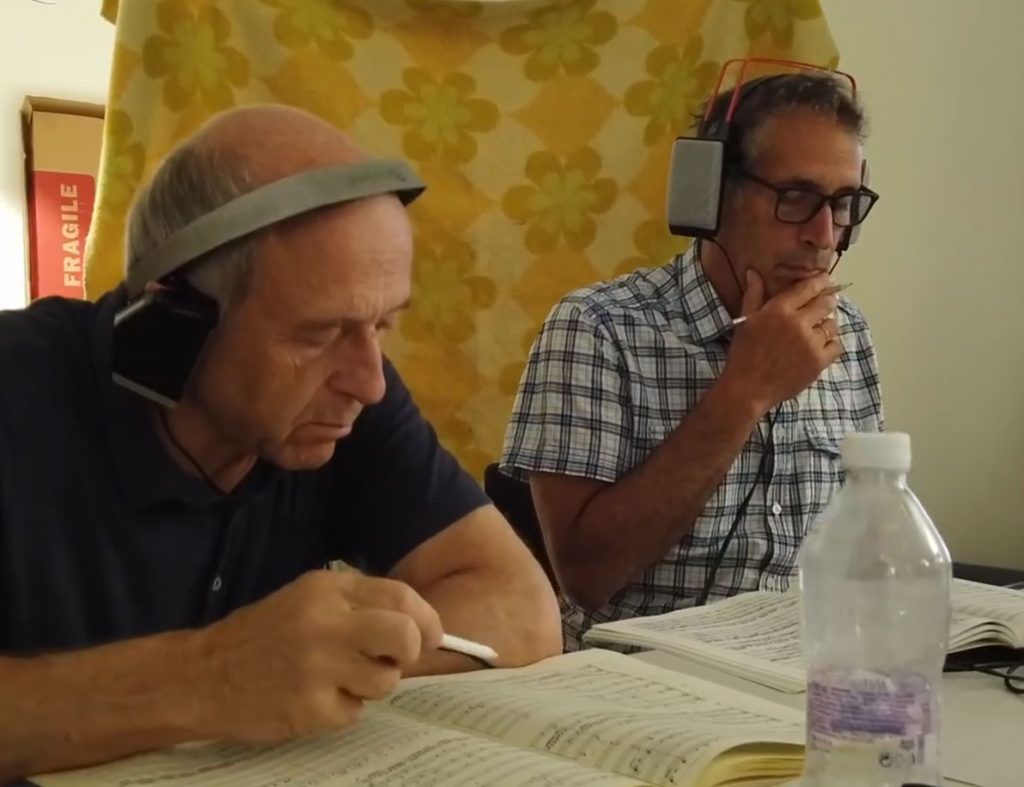
-
 She Composes Like A Man€20,99 – €34,49
She Composes Like A Man€20,99 – €34,49
She Composes Like A Man, tenThing Brass Ensemble, Tine Thing Helseth. Lawo Classics 2024 (32bit DXD, DSD256)
This album features the music of 13 female composers performed by Tine Thing Helseth and the tenThing Brass Ensemble. It takes its title from an outdated quote once made by a music critic attempting to praise Ethel Smyth’s music. This is trumpeter Helseth’s third album with Lawo, and she comes once again with great music and musicianship.
From Clara Schumann and Fanny Mendelssohn to Florence Price and Ethel Smyth, this program celebrates the work of female composers from around the world in world premiere transcriptions for the brass ensemble. The success of this album, and indeed it is a success, is not a gender thing. It is a matter of great music being performed by a superb ensemble.
Two words: astounding virtuosity.
This is what immediately came to mind as the first bars of this album began to play. As with other Tine Thing Helseth albums, the brass playing is simply phenomenal. Helseth is an amazing talent. And she is able to pull together a similarly impressive group of fellow brass magicians.
For a real treat of great ensemble playing, precision and technical chops, play Grazyna Bacewicz’s Mazovian Dance, track seven. It builds gradually. And then beginning about 0:55 it launches and will knock your socks off by the time it concludes two minutes later.
Tine Thing Helseth opens the liner notes with an introduction worth sharing:
“I started tenThing sixteen years ago along with three friends. My dream was to create a ten piece brass ensemble comprised solely of girls. And so it was. It was mostly for fun, but there also was a clear agenda to convey the message that brass is for everyone, regardless of gender. When I was growing up, it was entirely normal for girls to play both trombone and tuba, and for me playing trumpet felt like the most natural thing in the world. However, in the professional music world this was not necessarily the case. In many countries, there is still a long way to go in terms of gender equality in the brass world. I am often asked if it’s different to play brass only with girls, and if it would be different than playing with boys. The only thing I do know is that it feels incredibly good to play with the other musicians in tenThing. We trust each other. Without a doubt, trust and security are some of the things I value most when making music with others, and this applies to life in general.”
I am so glad to hear each album she releases. As with this album, the music selections are diverse, interesting, and need to be heard. The inclusion of works by Clara Schumann and Fanny Mendelssohn are easy, natural choices. But, delightfully, Helseth has ranged much further afield to highlight engaging works by Lili Boulanger, Cecile Chaminade, and Melanie Bonis (also known by her gender-neutral pseudonym, Mel Bonis) who are all French composers important in their own ways during their times. And Florence Price, the first African-American woman recognized as a symphonic composer, and the first to have her piece played by an American orchestra. And then Joy Webb of England (whose music I’d not heard before), American composer Ruth Crawford Seeger, Graznya Bazewich, Maria Theresia Paradis and Norwegian composer Agathe Backer Grøndahl. And, of course, Ethel Smyth, that crucial voice—a composer, conductor, and not least, suffragette.
What a wonderful array of composers and music to savor. Thank you, Tine Thing Helseth.
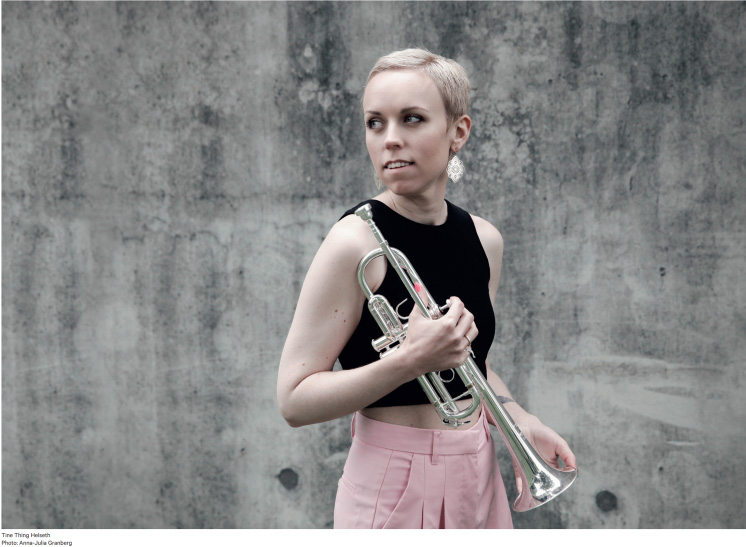
-
![Cuando el Fuego Abrasa (When The Fire Burns) [Pure DSD]](https://media.nativedsd.com/storage/nativedsd.com/wp-content/uploads/2024/03/26130034/EUDDR2403-300x300.jpg) Cuando el Fuego Abrasa (When The Fire Burns) [Pure DSD]€20,99 – €34,49
Cuando el Fuego Abrasa (When The Fire Burns) [Pure DSD]€20,99 – €34,49
Cuando el Fuego Abrasa (When The Fire Burns), Ensemble Bayona, with María José Perez (singer). Eudora Records 2024 (Pure DSD256).
Music of the Swiss composer, pianist and organist Joseph Lauber (1864-1952) opens this album. His Quintett über schweizerische Themen (Quintet on Swiss Themes) Op. 6, for two violins, viola, cello, and piano draws on late German Romanticism and includes some virtuoso piano writing. A main theme, a lyrical and expressive folk-like melody, recurs time and again throughout the work. The liner notes tell us that “this is the Guggisberglied, probably the oldest known Swiss folk song.” The work continues with a lighthearted and spirited “Scherzo” and several immediately ingratiating melodies presumably of Lauber’s own invention. Overall, a thoroughly engaging work for piano quintet, performed as a quite masterful introduction to this ensemble.
The focus on music grounded in folk themes continues with an engaging contemporary work by Swiss composer Christoph Blum (b. 1990), Wildwüchse aus Schweizer Volksliedern (Wild growths of Swiss folk songs) for string trio which he wrote in 2023 and dedicated to the Ensemble Bayona. Blum writes “I wanted to bring the compositional principle by which Lauber bases an ambitious chamber music score on folk song themes, into the present day… I chose to write ten seamless miniatures based on Swiss folk songs that propose new music full of contrasts and escapades… And hence the title: Swiss folk songs sprout wildly.” Blum achieves a humorous, sometimes wry, sometimes jovial, creation that the Ensemble say “deconstructs the harmony, rhythm, timbre and melody of the folk tunes without renouncing virtuosity, by using extended techniques on the violin, viola and cello.” Most engaging! Most enjoyable!
The Ensemble continues with Cantos (2017) for string quartet by Valencian composer and conductor Francisco Coll (b. 1985). This work is also inspired by popular tunes from Spanish and other origins. Since its premier in 2017 by its dedicatee, the Casals Quartet, it has become one of his most performed works worldwide. Coll describes Cantos as a piece “whose written cadences are intended to imitate the inflections of the human voice, hence its title.” As the Ensemble writes about this piece, its “evocative harmonic clashes generate an iridescent texture in which time seems to be suspended.” Again, another most engaging contemporary work.
The concluding work on the album again mines traditional folk tunes and melodies. The well known El amor brujo by Manuel de Falla (1876-1946) is here heard in a compelling transcription for cantaora (singer) and piano quintet dedicated to the Ensemble Bayona in 2022 by José Luis Turina (b. 1952). Cantaora María José Pérez joins the ensemble to deliver an evocative performance in this compact transcription, which manages to capture so much of Falla’s original composition. It veritably shimmers. Very nice!
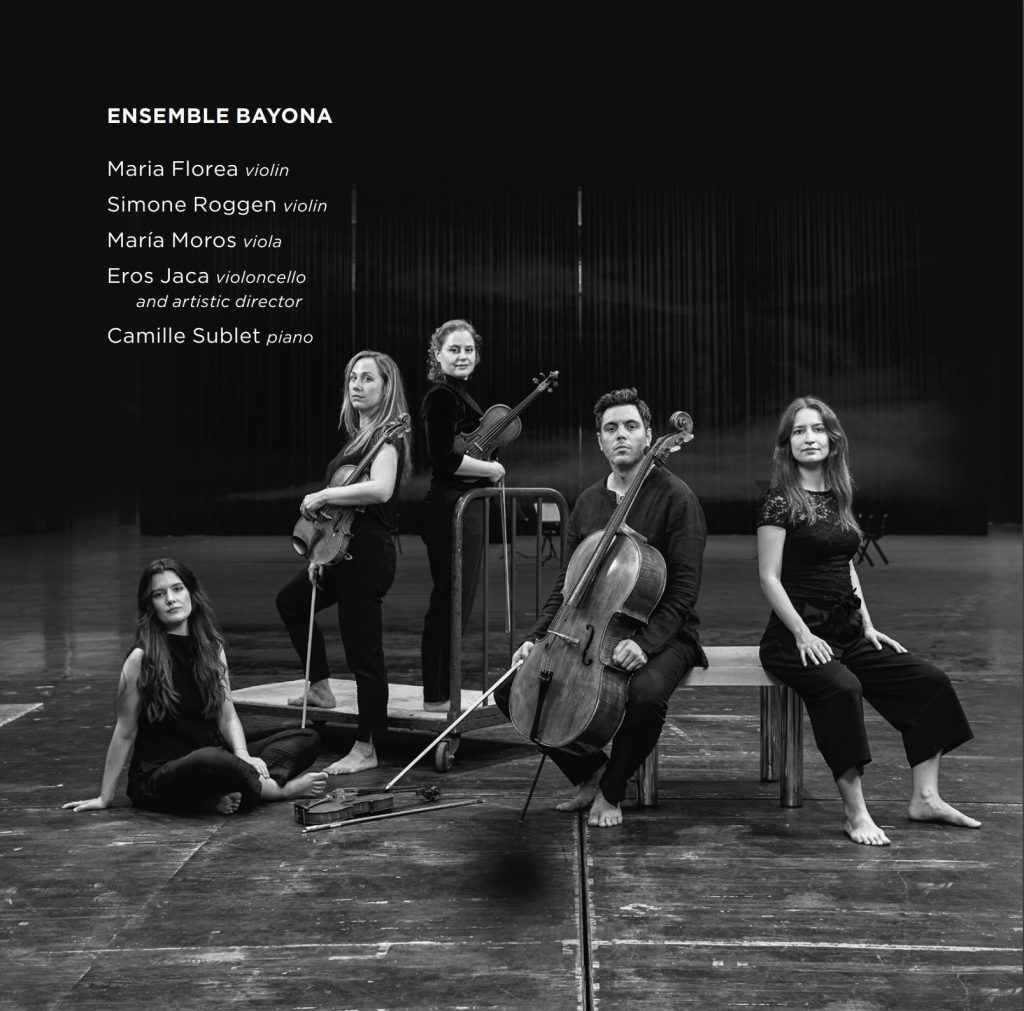
Ensemble Bayona made their debut in the Konzerthaus Berlin in October 2021. The Ensemble focuses on the repertoire of the first half of the 20th century, exploring the bridges between classical and contemporary music, just as evidenced in the programming for this, their inaugural, recording project. With Eros Jaca, its artistic director, the ensemble has a flexible formation, combining strings, winds, piano and percussion according to the requirements of each program.
Gonzalo Noqué worked with the ensemble to make this recording July 31 – August 3, 2023, in the Auditorio de Zaragoza, Sala Mozart, Zaragoza, Spain. And sonic results simply don’t get much better than this! Full, very natural sound, capturing the nuance of the deliciously different timbre of all the instruments involved. With a wonderful soundstage, air, natural reverberation, immense detail and resolution. And in the Pure DSD256 resolution to which I’m now listening, can you say transparent. Oh, indeed yes.
As with many other recordings Gonzalo has released, this album is available in Pure DSD256 if downloaded from NativeDSD (only). Any other release you may find will not be Pure DSD. I’ve written about the immense effort Gonzalo invests to achieve these Pure DSD recordings in some earlier articles HERE and HERE. This Pure DSD256 album with the Ensemble Bayona, and the many other Pure DSD256 releases from Eudora Records, are albums to treasure.
-
 Nocturne, et lumineux€20,99 – €34,49
Nocturne, et lumineux€20,99 – €34,49
Nocturne, et lumineux, Eline Hensels (cello), Daniël Kramer (piano). TRPTK 2024 (32bit, DXD, DSD256).
Music for cello and piano by Charles Koechlin, Nadia Boulanger, Leoš Janáček, Henriëtte Bosmans, and Francis Poulenc—oh, my! It just doesn’t get much better and more diverse a recital program than this. I was so looking forward to playing this album. And I am absolutely delighted in hearing it.
The album opens quietly, softly, with the first gentle chords of French composer Charles Koechlin’s Cello Sonata, Op.66 (1917). That he could write such gentle, loving music, at the close of WWI has always been something of a surprise to me. Melodies seem to flow effortlessly in and out of the musical landscape. The time signature itself seems fluid. After a number of climaxes evidencing some amount of tension during the third movement, that never quite resolve, the sonata ends in calm and soothing gentleness once again.
Eline Hensels’ cello rises and flows as she beautifully communicates the changing landscape of Koechlin’s vision. Daniël Kramer supports the cello, occasionally leads it, in a well matched partnership of vision for how the music should play itself out.
This excellent partnership continues in Nadia Boulanger’s Trois Pièces (originally written for organ in 1911 and transcribed for cello and piano in 1914). Again, another largely gentle and somewhat contemplative work—until the third movement which launches like a rocket with percussive power. Wow. An utterly satisfying work out, performed brilliantly.
This nicely communicative partnership between Hensels and Kramer continues over the remaining works on this album. They both play with technical excellence, but the beauty of the recital lies in how well they work together. There is no tension for dominance or priority, there is simply this easy, elegant collaboration that makes listening to them a pure pleasure. With works with which I was familiar (such as Janacek’s Pohádka and Poulenc’s Cello Sonata) and the performances of which I found very satisfying, to works that were new to me even if the composers were not, I found this album to make for a very interesting, very engaging, hour of music.
In re-reading my draft, I find I simply must add a further word about the Poulenc Cello Sonata. This is a work I find endlessly fascinating. It is played so many different was by different artists. Perhaps this is so because there is so much ambiguity in the work, so many twists and turns, so many changes of direction, so many wry moments, so many shifts in mood. Hensels and Kramer navigate through this work in a manner I find completely compelling. For now it lies at the top of the various alternate (and very completive) performances in my music library.
Once again, recording engineer Brendon Heinst gives us a sonic picture that places the artists in our listening rooms, with excellent detail and superb resolution. The balance of the two instruments is superbly managed. Each articulate, neither overwhelming the other, just a lovely rendition of two beautiful instruments being performed live in a very nice natural acoustic of Westvest90 Church, Schiedam (NL).
Highly recommended!
-
 à Amsterdam€19,99 – €34,49
à Amsterdam€19,99 – €34,49
à Amsterdam, by Postscript. TRPTK 2023 (32bit, DSD256)
Ann and I fell in love with this album when we first heard it in a pre-release sample file that Brendon sent to us for our thoughts. The performance, the sound quality, the music—all just to die for. We’d heard an earlier recording by Postscript and enjoyed it very much (Introductio, HERE). But this later set of performances and recording from three years later rides at yet a higher level of excellence.
The ensemble Postscript is comprised of Aysha Wills and David Westcombe (transverse flute), Octavie Dostaler-Lalonde (cello), and Artem Belogurov (harpsichord). In this album, they selected a number of works of the 18th century published (and in most cases also composed) in Amsterdam. They additionally chose to use Amsterdam-built instruments or copies thereof. And they settled on a historical venue with wonderful acoustics in the heart of the city: the Waalse Kerk. Thus the name of the album.
So, would an album so single city centric as this have enough musical interest and content to capture an audience’s attention? Well, I will say with certainty that it captured my and Ann’s full attention. We both sat raptly through the entire album when we first played it together. We found it just a marvelously enjoyable music experience. And in our listening we both felt ourselves transported into the presence of these four fine musicians. Even after nearly and hour and twelve minutes, we didn’t want the recital to end.
The composers on the album included some with whom I was quite familiar such as Carl Rosier (1640-1725), Jacob Klein (1688-1748), Willem de Fesch (1687-1761), and Pietro Locatelli (1695-1764). But then others who were completely unknown to me. No surprise, just opportunities for pleasant introductions. And pleasant introductions were indeed made by Postscript.
As I considered the several composers with whom I was not familiar, I had to remind myself that Amsterdam in the 17th and 18th centuries was an international city of commerce and wealth. As the liner notes comment, “In building on its success in book publishing in the 17th century, Amsterdam became fertile ground for music as well: at one point in the 18th century, there were no fewer than 76 houses publishing music!” Corelli’s Concerti Grossi Op. 6 and Vivaldi’s Four Seasons were both published in Amsterdam. That the quality of the compositions found on this album is quite high should not be any surprise.
In sum, this is a delightful album and well worth you taking a journey of discovery with Postscript. I highly recommend the exploration.
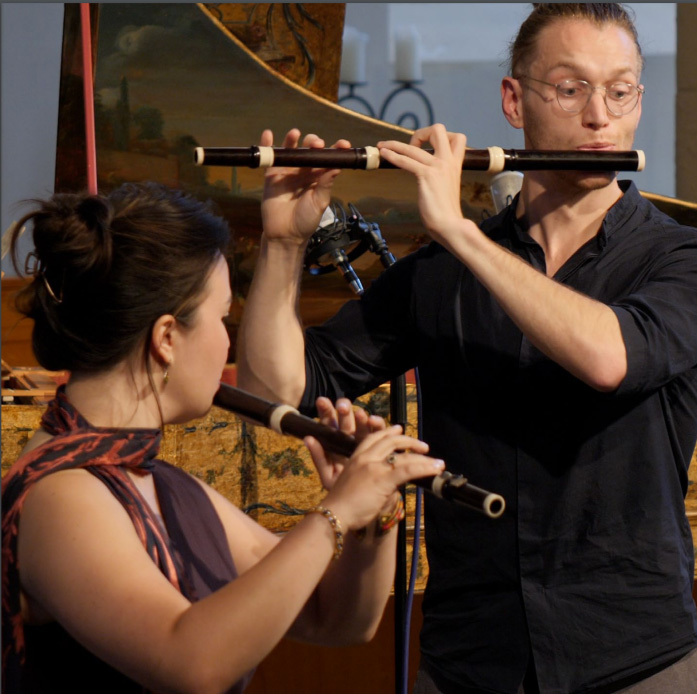
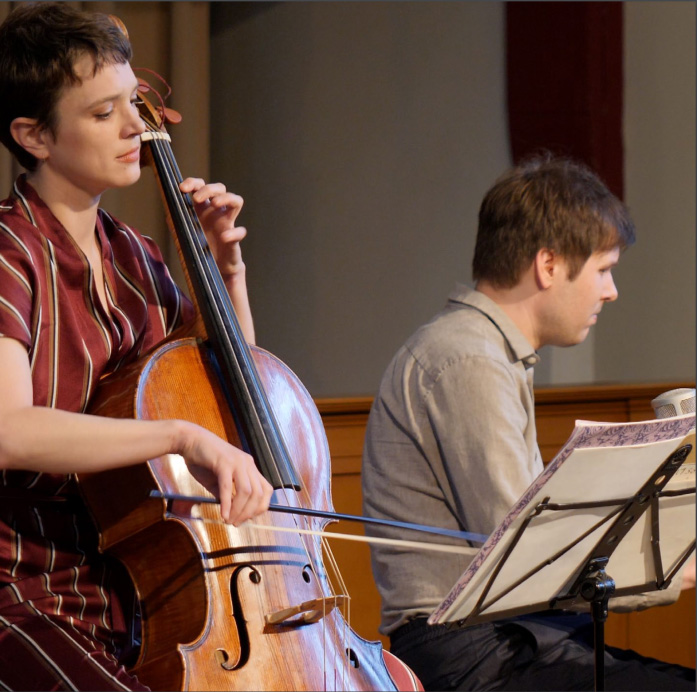
As always, the sonics captured by TRPTK founder and recording engineer, Brendon Heinst, are simply stellar. No, more than that. They are transportive. His care in making sure that he has the most accurate and timbrally natural capture of the sound heard in the recording session is obsessive. And his efforts pay off in recordings that are very often the highlight of my music listening in any given week. Kudos on this one, Brendon. It is superb.
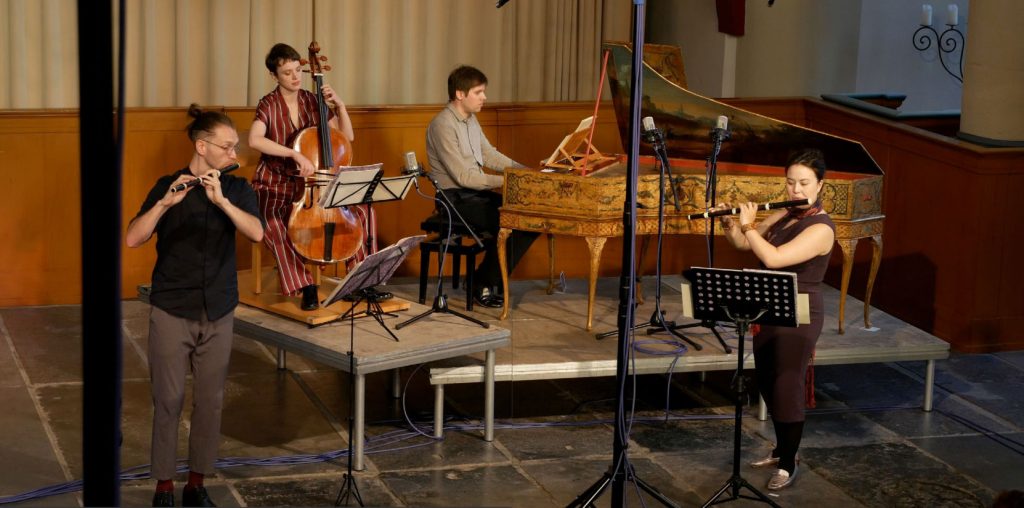
Addendum
So, why did it take me so long to write about this album if I like it so much? Well, truth to tell we heard à Amsterdam first in it’s raw Pure DSD256 pristine state, straight off the microphones. Not something that was ready to be released commercially in that raw state, but simply gorgeous sonically. I harbored a hope that it might be released as TRPTK’s first Pure DSD release. But it was not to be. In Brendon’s judgement, work was needed that he could only accomplish by taking the files into PCM and then exporting from there. When the finally mixed 32-bit DXD file was released, it was and is indeed gorgeous. But it wasn’t that pristine utterly transparent Pure DSD256 file which we’d first heard and in which we were so much in love. So, Brendon, I apologize for not moving ahead with a review for such a long time. But I’m over that. And listening again this week, I am in love with this album all over again in this 32-bit attire. (Hmmm, should I share any of this? Perhaps not. But it is backstory about how these wonderful albums get made that I think many may find interesting and, so, I think I shall leave this addendum in place.)
All images courtesy of the respective record labels.


